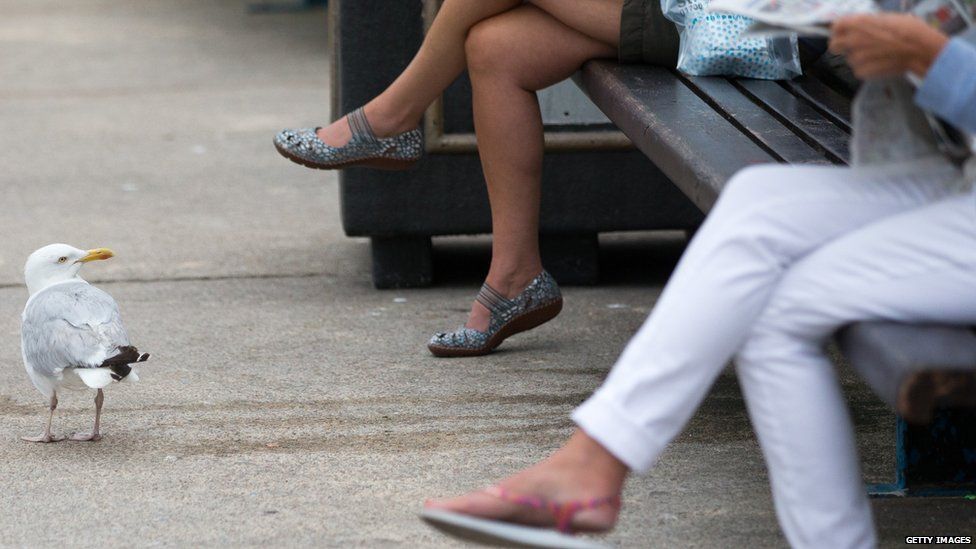Who, What, Why: Is it legal to attack a seagull?
- Published

Northumbria Police have opened an investigation over images apparently showing a man strangling a seagull. Given that many view them as vermin, what is their legal status, asks Chris Stokel-Walker.
On 8 August, a fisherman living in Northumberland posted a picture on Facebook appearing to show him throttling a seagull. In the 11 days since, a petition against his actions has reached 6,000 signatures, The offending image has now been taken down, but police are looking into the matter.
All species of gulls are protected, but only in the same way that any wild bird is in the UK, says RSPB public affairs officer Tony Whitehead. An attack on a seagull falls foul of the Wildlife and Countryside Act 1981 which covers England and Wales. It says that "if any person intentionally kills, injures or takes any wild bird, he shall be guilty of an offence". A similar law covers Scotland and Northern Ireland.
If convicted of cruelty against a seagull, an offender could be fined up to £5,000 and potentially jailed for up to six months. "The Wildlife and Countryside Act covers virtually every animal against cruelty or killing," explains Paul Diamond, who specialises in gull control and is based in Cornwall.
Despite a wave of concern over nuisance seagulls, there hasn't been a wave of vigilante action. But a seagull, seemingly poisoned, was left in front of a police station in Bridport, Dorset in July.
Strong anti-gull sentiment has intensified over the summer. The birds have been associated with attacks on humans, including pensioners and young children. "Killer gulls" were blamed for the death of a chihuahua dog in May, and a tortoise last month.
A YouGov poll earlier in August found that 44% of Britons would support a gull cull, though that varied by age - half of respondents aged 18-24 opposed a bird cull, while the same number of over-60s backed one. In the Republic of Ireland, one senator said seagulls were close to "actually endangering society".
Not every wild animal is protected by law. It's legal to kill grey squirrels by law as long as it is done humanely. In fact, as an invasive species, it is illegal to release a grey squirrel that has been trapped.
There is a way to control particularly troublesome gulls - licences are issued by the government in England to kill the lesser black-backed variety where they are seen to be a risk to public safety, habitats or other wildlife. Whitehead calls this "a civilised piece of legislation that allows protection but still offers you to cull birds if there is a problem". In Scotland, licences allow the great black-backed gull to be killed to protect birds or crops and livestock. Three different species can be killed for public safety purposes. In both Scotland and England a number of different types of gull can be killed in the interests of air safety.
But it's by no means clear that sheer numbers of seagulls represent any kind of problem. The number of herring gulls has seemingly halved in the past 30 years as Britain's fishing industry has waned. This population drop caused the British Trust for Ornithology to place the herring gull on its "red list" in 2009.
But it's more complicated than that, Diamond says. "At traditional nest sites the numbers have dropped dramatically. However most people will argue that's because they've started to move into urban areas and nest on roofs. The truth is we really don't know whether their numbers are up or down."
Diamond would not suggest the public engages in vigilantism against gulls. Not only is it illegal, it's likely to be ineffectual. "If a gull finds a particularly fruitful place, all that'll happen is you'll kill that gull and another will replace it," he says. "You've got to cut off the food supply."
This piece was originally published on 19 August.
Subscribe to the BBC News Magazine's email newsletter to get articles sent to your inbox.